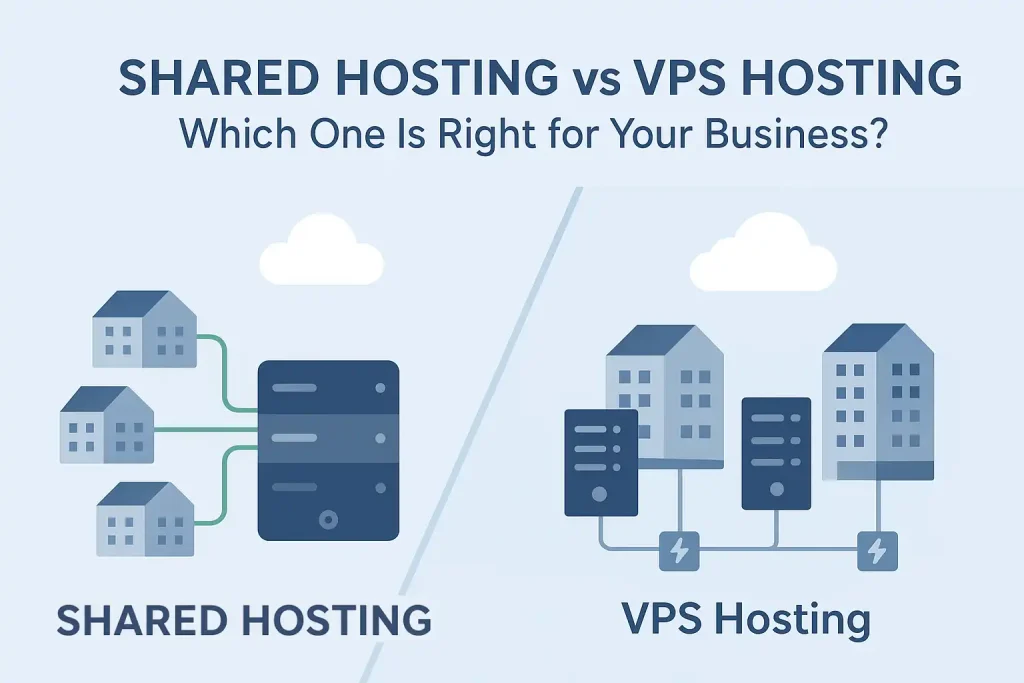In today’s rapidly changing educational landscape, schools are facing more competition than ever before. Parents and students are increasingly informed and selective: they research online, compare schools, check off-campus reviews, and expect experiences—not just promises. Meanwhile, technological advances and shifting communication trends are redefining how schools must connect with their communities.
As we move further into 2025, standing out isn’t just about having excellent academic outcomes—it’s about crafting and communicating a compelling identity, building trust, and engaging deeply with students, parents, alumni, and the wider community. Effective marketing strategies are no longer optional extras; they’re essential tools for growth, resilience, and relevance.
This post explores proven marketing strategies that schools can adopt in 2025 to differentiate themselves, attract more students, deepen community ties, and thrive in an evolving environment. But first: why does marketing matter so much for schools right now?
Why Marketing Matters for Schools
Here are the key reasons why schools need to prioritise marketing—especially in 2025:
1. Increasing Competition & Choice
More schooling options (private schools, international schools, online/hybrid models) mean prospective families have more choices. Differentiation becomes critical: if your school looks like every other, many will pick based simply on price or proximity.
Schools that can clearly communicate unique features—like specialized programs, values, extracurricular strengths, technology integration, campus culture—will stand out. Research shows that “offering exceptional programs” is a core way educational institutions differentiate themselves.
2. Informed Parents & Students Demand Transparency
With abundant information online, parents no longer rely solely on word-of-mouth—they check reviews, social media, virtual tours. They expect honesty about fees, teaching methods, student support, safety, campus facilities.
Marketing helps ensure schools can control their narrative rather than leaving it entirely to third parties or rumors. Trends in 2025 suggest transparency is no longer a “nice to have” but a non-negotiable.
3. Strong Brand Builds Trust & Reputation
A strong, consistent brand helps build credibility—among parents, students, faculty, and the wider community. This can help with student enrolment, retention, and even staff recruitment.
Schools that actively promote success stories — student achievements, alumni outcomes, teacher innovations — increase perceived value. Those stories, when authentic, resonate more deeply than generic messaging.
4. Engagement with Community & Stakeholders
Schools are part of their local communities. Good marketing can strengthen relationships with parents, alumni, local businesses, donors, and government bodies. When the school is perceived as a positive force in the community, there is more support—financially, socially, and politically.
Community engagement can generate word-of-mouth, referrals, and organic advocacy that no paid channel can match in trust and reach.
5. Digital Presence & Changing Behavior
More decisions—searching for schools, comparing programs, reading reviews—are done online. Parents and students often start with search engines, social media, virtual tours, or digital content. If your school isn’t visible, well rated, and responsive online, you will lose out.
Trends in 2025 show authentic content (especially user-generated content), short-form video, and multi-platform strategies are becoming more powerful.
6. Better ROI When Marketing Is Strategic & Data-Driven
Marketing done well isn’t just cost—it delivers measurable returns: increased enrolments, improved retention, better fundraising, more community partnerships. Analysis shows that schools that use data analytics, segmentation, and digital advertising can improve efficiency and outcomes.
Investment in areas like local search optimization, online reputation management, or targeted digital ads often yields more consistent, trackable benefits than many traditional offline-only efforts.
7. Resilience & Adaptation
Events like the COVID-19 pandemic highlighted that schools which had strong digital channels, flexible communication strategies (virtual open houses, remote tours, online engagement), and trust with their stakeholders adapted better.
In 2025, being able to adjust messaging, shift delivery modes, and respond to crisis or changing expectations is essential. Marketing gives schools the tools to pivot.
Top 10 Marketing Strategies for Schools
1. Create Immersive Virtual Campus Experiences
In 2025, your prospective students and their guardians will increasingly expect to see and feel your school online before even visiting in person. Virtual experiences let you bring your campus to them—especially useful for distant applicants, overseas families, or safety-conscious visitors.
What makes a virtual campus experience effective
360° tours & interactive maps: Embed 360° panoramas of classrooms, libraries, labs, sports facilities, green spaces, walkways, etc. Use hotspots or icons on campus schematics to allow users to zoom in and click for more info (slides, video, audio).
Guided “day-in-the-life” narratives: Sequential storytelling lets viewers follow a typical student’s route through a day—classes, break, extracurriculars. Use ambient sound, student voices, or video overlays to enhance realism and emotional resonance.
Embedded call-to-actions & lead captures: Rather than just passive viewing, integrate forms, chat prompts, “book a visit / talk to an admissions officer” at key points in the tour. Data shows users who share contact info during tours convert at higher rates.
Mobile & cross-browser optimized: Many users will view via phones or tablets — ensure the experience works smoothly (fast loading, responsive layout) across browsers. Poor performance is the death of immersion.
Emotional & community touches: Include testimonials, glimpses of student life (clubs, performances), alumni stories, campus traditions. These build connection beyond bricks and mortar.
Benefits
Accessibility & convenience: Families unable to visit physically can explore remotely.
Wider reach & ongoing attraction: Prospects can revisit the tour anytime; it remains a marketing asset on your website, social channels, and email campaigns.
Stronger lead generation: Embedding lead-capture tools boosts conversion of casual site visitors into prospective leads.
Differentiation: Many schools still use static photos or PDFs. A well-executed virtual campus gives you a competitive edge.
Implementation tips
Start small: pilot one building or wing, then expand.
Use professional photography / videography if budget allows; or hire local content creators to reduce cost.
Invest in a reliable virtual tour platform (or partner with firms like CampusTours) rather than DIY hacks.
Track analytics: where do users pause, exit, spend time? Use that to refine the experience.
Update periodically—new infrastructure, renovated labs, evolving campus features should be reflected.
2. Leverage Student and Parent Ambassadors
Authentic voices—especially students and parents—are among your most powerful marketing assets. They humanize your institution and resonate more than polished brochures or adverts.
Student Ambassadors
Role & functions
Serve as guides during in-person or virtual tours, open houses, shadow days.
Create content: social media takeovers, video vlogs (“a day in my life”), blog posts, Q&A sessions.
Be peer contacts. Prospective students often feel more comfortable interacting with current students. Studies suggest ~92% of prospective students say talking to student ambassadors helps them decide.
Best practices
Select ambassadors who are enthusiastic, articulate, diverse in background, and genuinely representative.
Give them autonomy — allow them to share experiences in their voice (within broad guidelines) rather than overly scripted messaging.
Provide training & tools: brand guidelines, content ideas, social media tips, media safety, feedback loops.
Recognize & reward: stipends, certificates, special privileges can help maintain engagement.
Parent Ambassadors
Why they matter
Parents trust other parents. Their word-of-mouth carries strong influence over school decisions.
They can amplify messaging locally—at community groups, playground conversations, social media, parent forums.
How to structure a parent ambassador program
Define roles clearly: open-house hosts, community connectors, social media promoters, referral points.
Provide training & talking points aligned with your school brand (so that messaging is consistent).
Use digital tools/channels: WhatsApp groups, parent forums, social media groups for prospective parents to engage.
Track impact: number of referrals, event attendance attributed, conversions from ambassador leads.
Appreciate and recognize them (public acknowledgments, small gifts, special events).
3. Develop Hyper-Local Community Partnerships
Your immediate community is a fertile ground for visibility, goodwill, and meaningful connections. Partnerships deepen your roots and offer mutual value.
What are community partnerships?
These are collaborative relationships between your school and local organizations, businesses, nonprofits, government bodies, cultural institutions, media outlets, etc. The goal is to co-create activities, programs, resources, or events that benefit both parties and build goodwill.
Benefits
Brand visibility & credibility: When local organizations associate with your school (sponsorships, events), your brand is uplifted.
Access to new audiences: Through partner communications, audiences (parents, local residents, employees) are exposed to your school.
Resource leverage: Partners may contribute space, funding, expertise, or volunteers.
Enhanced student learning: When students engage in community projects, they build real-world skills and positive associations with your school.
Example partnership types
Collaborations with local NGOs for social impact projects (e.g. environmental cleanup, literacy drives).
Partnerships with local businesses (cafes, tech companies, shops) for sponsorships, discounts, or co-hosted events.
Tie-ups with libraries, museums, cultural centers for student exhibitions, workshops, or joint programs.
Associations with local media (newspapers, radio) for coverage of school events, student achievements.
Internships / volunteer schemes with nearby companies for students.
Shared events—festivals, fairs, community days—in collaboration with local organizations.
How to build strong partnerships
Start with alignment: Identify organizations whose mission or presence aligns with your school’s values or goals.
Propose win-win initiatives: Don’t only ask; suggest joint programs where both sides benefit (visibility, impact, shared resources).
Formalize agreements: Simple memorandum of understanding (MoU) or partnership guidelines clarify roles and expectations.
Co-create & involve students: Engage students in planning and executing collaborative projects.
Showcase results: Use joint events or media coverage to highlight partnership successes, which encourages future cooperation.
Sustain and evolve: Don’t treat partnerships as one-off. Keep reviewing, refreshing, renewing commitment.
4. Implement Data-Driven Digital Advertising
Digital advertising is powerful—but only when you use it smartly. The key in 2025 is data-driven decision making: tracking, iteration, and targeting precision.
Why data-driven digital ads matter for schools
You can reach specific audiences (parents, students, geographic zones, income brackets).
You can measure what works: which ads generate clicks, inquiries, tour signups, applications.
You can optimize budget by cutting waste—shift spend toward ads that perform best.
You can retarget interested visitors (e.g. those who visited your site but didn’t take action).
Types of digital ads useful for schools
Search ads (SEM / Google Ads): appear when people search “best school in [city]”, “private school admissions,” etc.
Display / banner ads: on websites visited by your target audiences (education, parenting, local news).
Social media ads: Facebook, Instagram, TikTok, YouTube—targeted by demographics, interests, location.
Retargeting ads: follow up with people who visited your site or interacted but didn’t convert.
Video / rich media ads: short video clips on YouTube or Instagram to showcase your campus, programs, or testimonials.
Best practices & implementation
Define clear objectives & KPIs
E.g., cost per lead, cost per campus tour signups, impressions, click-through rate (CTR).
Use micro-conversions (e.g. filling a form, downloading a brochure, watching 75% of a video) as signals.
Audience segmentation
Segment by location (city, neighborhoods), by parent demographics, by interests (education, extracurriculars).
Customize messaging per segment (for instance, “IB program” for international families, “STEM-focused” for local tech-interested parents).
Landing pages & ads alignment
Ensure your ad messaging, images, and call-to-action align with the landing page.
Optimize landing pages for speed, mobile, and clarity (a single goal per page).
Use analytics & attribution models
Connect Google Analytics 4 (GA4) or equivalent to your ad platforms.
Use UTM parameters, conversion tracking, attribution to see which channels drive real application or inquiry outcomes.
Refine budgeting accordingly.
A/B testing & iteration
Test different ad copy, images, headlines, calls to action.
Use “winner” ads to scale, discard underperforming ones.
Retargeting & lookalike audiences
Retarget “warm” users (visited key pages but didn’t convert).
Create lookalike audiences: those similar to people who have already converted (current parents, alumni).
Ad frequency, scheduling, and budget pacing
Don’t overexpose the same ad to the same person (ad fatigue).
Schedule ads to show during times when parents are likely searching (evenings, weekends).
Use “accelerated vs standard” pacing based on campaign maturity.
Compliance & branding consistency
Make sure ads adhere to privacy laws (GDPR, local data privacy) and institutional brand guidelines.
Use consistent visuals, logos, color schemes.
Example: A school in a suburban area runs Google search ads targeting “top kindergarten in [Suburb]” and pairs it with a Facebook ad campaign to nearby parents. They retarget parents who visited the “Admissions” page but dropped off by showing them a short video walkthrough. After a few weeks, they compare cost per inquiry across channels and shift more budget to the highest performing ones.
5. Host Signature Events That Become Community Talking Points
Signature events are more than “open houses.” These are unique, memorable happenings that become associated with your school and draw attention, engagement, and goodwill.
Why signature events matter
They generate buzz and word-of-mouth.
They humanize the school—people experience your culture, faculty, students firsthand.
They create media / PR opportunities.
They serve as lead generation magnets: families attend, get to know you, convert.
Types of signature events
Annual festival or fair (arts, culture, STEM, food).
Community open days with performances, student showcases.
Speaker series (invited leaders, alumni, experts) open to the public.
Workshops / camps (satellite summer or weekend programs).
Competitions or tournaments (sports, robotics, debate) involving local schools.
Gala / fundraiser events where parents, alumni, businesses participate.
Innovation challenges / hackathons with students, parents, local industry.
How to make your event stand out (so it becomes “talked about”)
Choose a strong theme or hook
Something unique: e.g. “Tech Futures Expo,” “Cultural Heritage Festival,” “Green Campus Day,” “Innovation Bootcamp.”
Tie it to your brand values and local context.
Promote widely & early
Use multi-channel promotion: school website, local media, social media, flyers, parent networks, local business partners.
Create anticipation: teasers, countdown posts, behind-the-scenes content.
Offer high-value elements
Keynote speakers, performances, and interactive sessions.
Food, entertainment, kid-friendly attractions.
Workshops or hands-on activities that engage attendees.
Leverage partnerships & sponsorships
Invite local businesses to sponsor booths or offers.
Collaborate with NGOs, cultural groups, local media to amplify reach.
Capture and extend the experience
Use cameras, video, social media live streams.
Encourage attendees to share via hashtags.
Collect contact info during event (sign-in, raffle).
Follow up with “thank-you” emails, event highlights, testimonials.
Make it repeatable & scalable
Over time, establish it as a must-attend annual event—people plan for it.
Each year, iterate, improve, and broaden outreach.
Example: A school launches an annual “Tech & Innovation Festival” where students demonstrate robotics, VR demos, science experiments, invited tech‐industry speakers, and local start-ups showcase. The event gets coverage in local press, families bring friends, and the school collects dozens of leads for next year’s admissions.
6. Invest in Content Marketing
Content marketing remains a backbone strategy because it builds trust, authority, and brings organic traffic when done right.
Why content marketing is essential for schools
Content establishes you as a thought leader and a resource (not just an institution selling seats).
It helps in SEO (organic search traffic).
It gives ongoing value: guides, blog posts, videos, FAQ pages.
It nurtures prospective families across their decision journey, from awareness to application.
Types of content schools should create
Blog articles: parenting tips, curriculum overviews, admission guides, alumni stories.
Long-form guides / eBooks: “Choosing the Right School,” “Preparing for Entrance Exams.”
Video content: campus tours, teacher introductions, student vlogs, classroom demos.
Infographics and visual content: process flows (admissions, school calendar), comparisons.
Podcasts / webinars: Q&A sessions, expert panels, parent forums, teacher talks.
Downloadable resources: checklists, brochures, sample lesson plans, sample timetables.
Community / local stories: how the school engages locally, student social projects.
Best practices & implementation
Map content along the student/parent journey
Awareness (e.g., “How to choose a good school”), Consideration (e.g., “What makes a STEM school”), Decision (e.g., “How to schedule a visit / apply to our school”).
Tailor content to each stage.
Focus on SEO & keyword research
Use tools (Ahrefs, Google Keyword Planner) to find queries parents search (e.g. “school fees in [city],” “best primary school near me”).
Use local and long-tail keywords.
Optimize title tags, meta descriptions, headers, and images.
Maintain quality & consistency
Publish regularly (e.g. 1–2 blog posts per month).
Ensure polished writing, good visuals, proofreading.
Use a content calendar for planning.
Repurpose content
Turn a blog post into a video, infographic, social media carousel.
Extract quotes for social media, email newsletters.
Promote & distribute
Share via social media, parent groups, local community channels.
Use email newsletters to highlight your best content.
Encourage sharing by parents, students, alumni.
Leverage storytelling & authenticity
Use real teacher voices, student stories, “behind the scenes.”
Tell challenges, successes, journey narrative (not just polished “prospectus” copy).
Measure & iterate
Track pageviews, engagement time, leads generated, bounce rates.
See which topics resonate, then produce more.
Example: A school posts an in-depth blog: “Top 10 Questions Parents Ask When Choosing a School in [City].” It includes local context, fees, curriculum options, and a link to “Book a campus visit.” Over several months it drives organic traffic, and many visitors convert by filling the “visit request” form.
7. Optimize for Local Search and Online Reputation
Even the best website or the best marketing plan won’t matter if people in your city can’t find you or if your online reputation is weak. This strategy ensures you are visible locally and trusted.
Key components of local search optimization (Local SEO)
Google Business Profile (formerly Google My Business)
Claim and verify your school’s listing.
Fill out all fields (address, phone, hours, photos, services).
Use the “Posts” feature for news/events.
Respond to reviews.
Add virtual tour links if available.
Keep it updated (holiday hours, new facilities).
This is one of the most visible local signals.
Consistent NAP & citations
Ensure your Name, Address, Phone number (NAP) format is consistent across your website, directories, social profiles, local listings.
Submit your school to local directories, education directories, mapping platforms, chamber of commerce, local forums.
Local content & keyword targeting
Use location-based keywords in your pages (e.g. “High school in [City],” “Primary school near [Neighborhood]”).
Publish hyper-local content: “How [School] contributes to [City / Neighborhood]” or “Community events in [Local Area].”
On-page & technical SEO
Optimize title tags, meta descriptions, headings with local keywords.
Make sure pages are fast, mobile-optimized, secure (HTTPS).
Use structured data / schema markup (LocalBusiness, School) to help search engines understand your entity.
Backlinks & local authority
Get mentions / links from local news sites, parent blogs, community organizations, education portals.
Partner organizations, local events, alumni networks can help link back to your site.
Online Reputation Management
Encourage positive reviews
Ask satisfied parents, students, alumni to leave reviews on Google, Facebook, local portals.
Make it easy: send direct links, prompts.
Monitor & respond to reviews / feedback
Thank positive reviewers.
Address negative reviews professionally, concisely, showing willingness to resolve.
Demonstrating responsiveness builds trust with future viewers.
Showcase social proof
Display testimonials, case studies, awards, recognitions on your website.
Use “success stories” slides, video endorsements, parent quotes.
Maintain consistent, updated profiles
Wikipedia / Wiki pages (if applicable), LinkedIn, Instagram, Facebook profiles should have consistent info, updated content.
Ensure there are no conflicting entries or outdated addresses/contacts.
Handle negative content / misinformation
If you see incorrect information (old address, wrong program listings), correct them on directories, contact site owners.
Suppress misinformation via fresh, high-quality content and optimization.
Why this matters
Many parents search “best school near me,” “top high school in [City]”; if you aren’t optimized locally, you lose to competitors.
A strong local presence often shows in the “local pack” (map + 3 listings) on Google search—a prized visibility slot.
Parents often check reviews before they tour or apply; a strong reputation can be decisive.
Example: A school optimizes its Google Business Profile, adds recent photos, updates posts about events, and responds quickly to reviews. It also ensures its name, address, phone number are consistently listed across local directories. As a result, the school appears in Google’s “Schools near me” map pack for its region, and many local families see it when they search.
8. Develop Strategic Social Media Storytelling
Social media is not just a broadcast channel—it’s a narrative space. In 2025, to cut through the noise, schools must tell authentic, compelling stories that resonate emotionally, show values, and invite engagement.
Why storytelling on social media works
Stories humanize your school: they let families imagine themselves in your community.
Audiences remember stories far more than stats or simple promotional posts.
Well-told stories are shareable: followers may repost, comment, or tag others, amplifying reach organically.
Stories give depth to your brand, showing culture, challenges, growth—not just polished marketing claims.
Key elements of good school stories
Characters / heroes — students, teachers, parents, alumni
Conflict / challenge — something to overcome (academic struggle, personal growth, community project)
Turning point / action — how the school (or community) intervened or supported
Outcome / transformation — the result, and what changed
Emotion & detail — small moments, quotes, candid images/videos
Platforms & content types
Instagram / Facebook: posts, carousels, reels, stories, takeovers
TikTok / Reels: short behind-the-scenes clips, challenges, trending formats
LinkedIn (if relevant): teacher/leadership stories, partnerships, alumni career journeys
YouTube / Vimeo: longer video stories, mini-documentaries, “a day in the life”
Stories & live sessions: Q&As, campus tours, event coverage
Strategies & tips
Plan with a theme calendar
Organize monthly/quarterly themes (e.g. “growth,” “service,” “innovation”) and map story ideas around them.Use micro-stories consistently
Don’t always need long pieces — a 30-second highlight (student wins, fun classroom moment) works well.Leverage user-generated content (UGC)
Invite students, parents, alumni to share their stories, photos, or videos. Run contests or prompts.Takeovers & day-in-life features
Let a student or teacher “own” your social feed for a day, showing authentic perspective.Repurpose stories across channels
A video can become a blog post. Quotes from a story become social posts. Small slices go into newsletters.Encourage engagement & feedback
Ask questions, prompt comments/shares (“What do you think about this? Tag a friend who’d love this story”).
Engage by replying to comments.Maintain brand consistency
Use consistent visuals, tone, logo placement. Even stories should feel “on brand.”Measure what resonates
Track metrics: views, saves, shares, engagement rate. See which stories capture attention and replicate the style.
9. Implement Referral Reward Programs
Referral programs tap into your existing network—students, parents, alumni, teachers—to bring in new leads. Because people trust peers, referrals often have higher conversion rates than cold outreach.
Why they’re effective
Lower acquisition cost (you rely on existing stakeholders)
Better quality leads (referrals tend to be more motivated)
Builds community and loyalty (participants feel invested)
Designing a school referral program
Define what counts as a referral
Parent refers another family
Alumni referral
Student brings friend
Staff refers prospects
Choose the incentives
Non-transactional rewards often work better (so it feels part of community, not “sales”).
Possible rewards:Tuition discount, book voucher, school merchandise, priority in admission, event tickets
Recognition: spotlight in newsletter, “referrer of the month”
Non-monetary: special access, guest passes, alumni privileges
Promote the program
Use email campaigns, parent meetings, school website, social media, newsletters.
Provide clear referral forms or digital links.Make it easy to refer
One-click referral links, simple forms, shareable templates or messages.Track & attribute properly
Use unique codes, referral links, or fields in forms to track who referred whom.
Monitor conversion rate (referral → inquiry → enrolment).Communicate & appreciate
Notify referrers when their referral takes a step (visit, application).
Celebrate successful referrers publicly.Iterate & optimize
See which incentives drive the best results; test different rewards or messaging.
Example: A school offers a “Bring a friend” day. If a current student’s referred friend enrols, both families get a small discount or free school supplies. The referrer is named in the school newsletter with thanks. Over the admission cycle, this helps generate additional applications without heavy ad spend.
10. Execute Targeted Direct Mail Campaigns
Despite the digital world, direct mail remains effective—when targeted, beautifully designed, and paired with digital follow-up. In educational marketing, direct mail can cut through inbox noise and leave a tangible impression.
Why direct mail still works
Physical items are memorable and tangible
Less competition vs. crowded email inboxes
More personal if done with customization
Works well for local targeting
Types & formats of direct mail for schools
Postcards (announcements, open house invites)
Brochures / pamphlets
Personalized letters
Newsletters / magazines
Flyers + inserts
EDDM (Every Door Direct Mail) — mail to every home in a zip code
Best practices for direct mail campaigns
Highly targeted mailing lists
Use demographics: locations near your school, households with children, income ranges, etc.
Use enrollment data to find neighborhoods that send many students.Personalization & customization
Use names, reference local context.
Use variable data printing (e.g. different messages based on neighborhood).Compelling offer or hook
E.g. “Join our open house,” “Early-bird discount on registration,” “Meet our teachers day.”
Use QR codes / short URLs linked to relevant landing pages.Strong design & clarity
Use high-quality photos, consistent branding, concise but persuasive copy, clear call-to-action.
Make sure your key message is visible even from a glance.Follow-up with digital touchpoints
After a direct mail drop, run retargeting ads, email campaigns to those same households, or follow-up calls. Integrate digital + physical.Timing & frequency
Schedule drop before key admission windows or events. Repeat with varied materials.
Avoid oversaturating a household too early.Measure response & ROI
Use dedicated landing pages, unique QR codes, or promo codes to track conversions from each mail batch.
Compare cost per enquiry, cost per enrolment.
Example: A school sends personalized postcards to homes within a 5-km radius announcing an “Experience Day” event, with QR code to register. They follow up with a Facebook ad targeting those same postal codes, reminding them of the event.
Common School Marketing Challenges (And How to Solve Them)
Even the best-intentioned school leaders run into marketing roadblocks. Resources are often tight, competition is fierce, and the digital landscape can feel overwhelming. Below are three of the most common challenges schools face—and practical solutions to overcome them.
⚠️ Scattered Efforts Across Multiple Platforms
Many schools spread themselves too thin. They post occasionally on Facebook, send a newsletter every few months, and update their website once in a while—but the lack of coordination means families get mixed messages and engagement stays low.
How to Solve It:
- Create a unified marketing plan. Develop a clear strategy that defines your target audience, key messages, and preferred platforms.
- Centralize your content calendar. Plan posts, newsletters, and campaigns in one place to maintain consistency.
- Prioritize quality over quantity. Focus on the two or three platforms where your audience is most active rather than trying to be everywhere at once.
⚠️ No Clue What’s Working
Without tracking results, schools waste time and money guessing which efforts bring in students. It’s common to invest heavily in social media ads or brochures without knowing if they actually drive enrollment.
How to Solve It:
- Use analytics tools. Platforms like Google Analytics, Meta Insights, or email dashboards show what content performs best.
- Track conversions, not just impressions. Instead of focusing only on likes or clicks, measure actions like event registrations, inquiries, and applications.
- Test and refine. Run A/B tests on email subject lines, social ads, or postcards to see what gets more responses, then scale the winners.
⚠️ Limited Budgets Competing Against Better-Funded Competitors
Independent schools and smaller institutions often compete with large, well-funded districts or international schools with dedicated marketing teams. Limited resources make it hard to stand out.
How to Solve It:
- Lean into your unique story. Highlight the personalized attention, niche programs, or community culture that bigger competitors can’t replicate.
- Maximize low-cost marketing channels. Organic social media, parent referral programs, partnerships with local businesses, and community events can be high-impact with minimal expense.
- Invest strategically in digital ads. Even small budgets can go far if campaigns are tightly targeted by location, demographics, and intent.
- Leverage ambassadors. Empower parents, alumni, and students to spread the word through testimonials and referrals—often more powerful than paid ads.
Power Marketing for Schools With Corexta
Effective school marketing isn’t just about creative ideas—it’s about organizing campaigns, assigning tasks, and making sure every effort is tracked. That’s where Corexta comes in. As a powerful project management tool, Corexta helps school administrators and marketing teams plan campaigns, manage content calendars, and collaborate seamlessly across departments. By centralizing all activities in one platform, schools can eliminate confusion, reduce duplicated work, and stay consistent across every channel.
Corexta also provides visibility into progress and results. Schools can monitor tasks, set deadlines for upcoming events, and track what’s driving engagement or enrollment inquiries. With this clarity, decision-makers can use their limited budgets more wisely and double down on strategies that work. From coordinating open house promotions to managing social media storytelling, Corexta makes marketing execution smoother and smarter.
Ready to bring structure and impact to your school marketing? Start managing campaigns with Corexta today—streamline your efforts, empower your team, and achieve stronger results with less stress.









